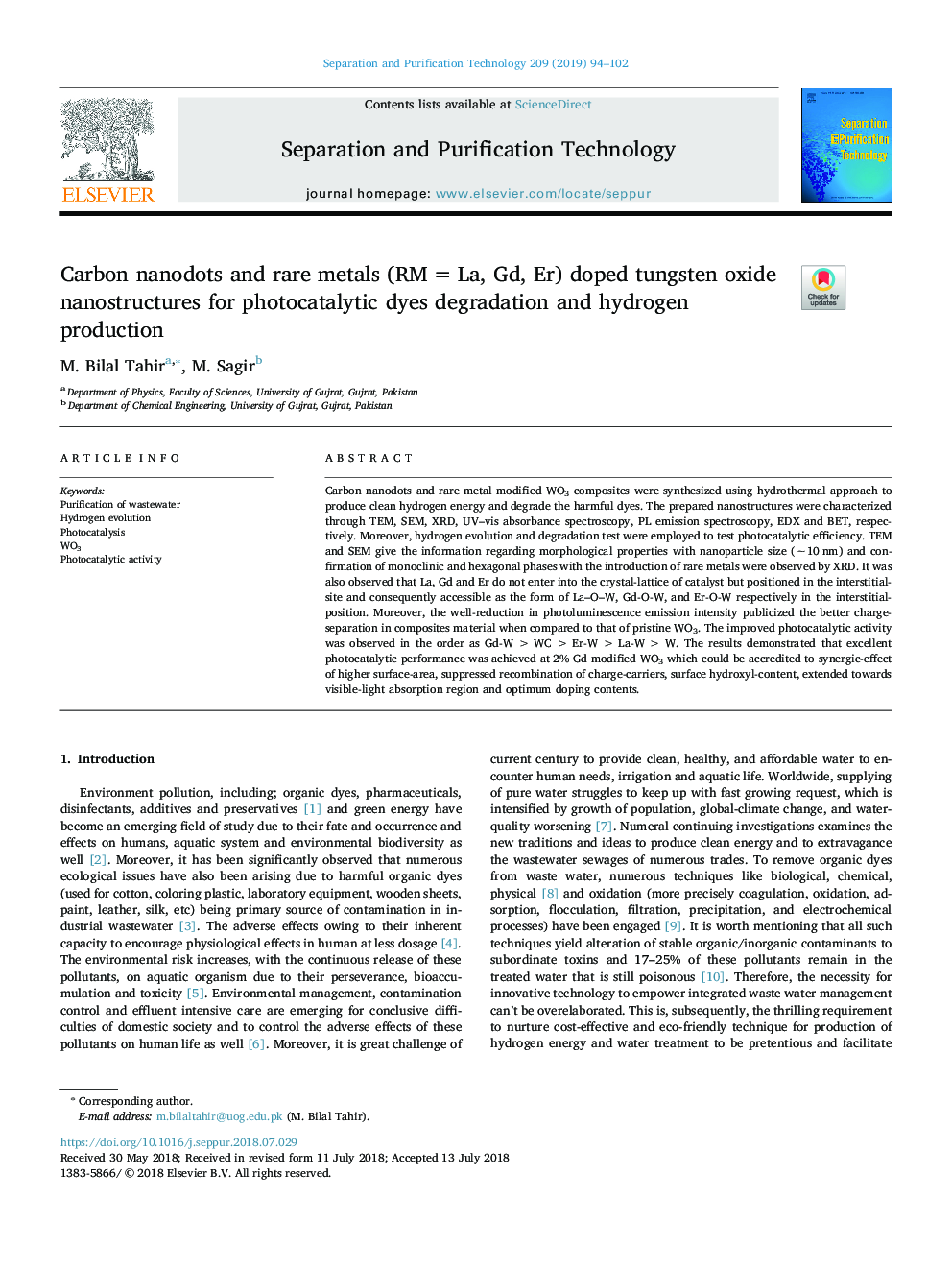| Article ID | Journal | Published Year | Pages | File Type |
|---|---|---|---|---|
| 7043454 | Separation and Purification Technology | 2019 | 9 Pages |
Abstract
Carbon nanodots and rare metal modified WO3 composites were synthesized using hydrothermal approach to produce clean hydrogen energy and degrade the harmful dyes. The prepared nanostructures were characterized through TEM, SEM, XRD, UV-vis absorbance spectroscopy, PL emission spectroscopy, EDX and BET, respectively. Moreover, hydrogen evolution and degradation test were employed to test photocatalytic efficiency. TEM and SEM give the information regarding morphological properties with nanoparticle size (â¼10â¯nm) and confirmation of monoclinic and hexagonal phases with the introduction of rare metals were observed by XRD. It was also observed that La, Gd and Er do not enter into the crystal-lattice of catalyst but positioned in the interstitial-site and consequently accessible as the form of La-O-W, Gd-O-W, and Er-O-W respectively in the interstitial-position. Moreover, the well-reduction in photoluminescence emission intensity publicized the better charge-separation in composites material when compared to that of pristine WO3. The improved photocatalytic activity was observed in the order as Gd-Wâ¯>â¯WCâ¯>â¯Er-Wâ¯>â¯La-Wâ¯>â¯W. The results demonstrated that excellent photocatalytic performance was achieved at 2% Gd modified WO3 which could be accredited to synergic-effect of higher surface-area, suppressed recombination of charge-carriers, surface hydroxyl-content, extended towards visible-light absorption region and optimum doping contents.
Related Topics
Physical Sciences and Engineering
Chemical Engineering
Filtration and Separation
Authors
M. Bilal Tahir, M. Sagir,
